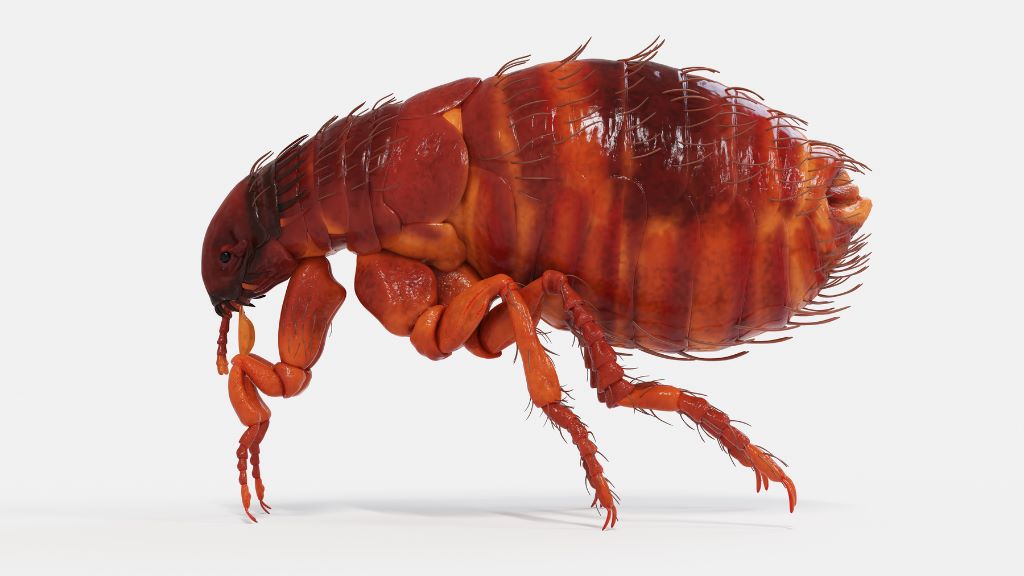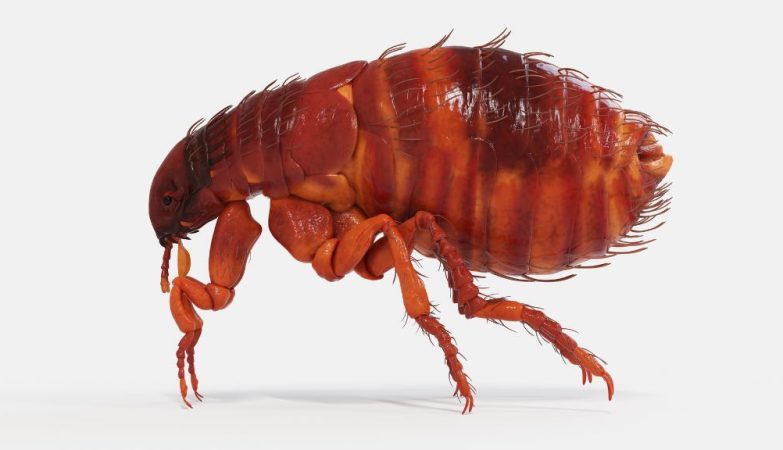Fleas are tiny creatures that often make life uncomfortable for pets and humans alike. These little pests are notorious for their ability to jump long distances and cause itchy bites. But have you ever wondered what fleas look like? Understanding their appearance can help you identify and manage these nuisances effectively. In this article, we’ll dive deep into the world of fleas, exploring their features, behavior, and even some surprising facts.
What Are Fleas?
Fleas belong to a group of insects known as Siphonaptera. These insects are blood-sucking parasites that primarily feed on the blood of mammals and birds. Fleas are particularly common among pets like cats and dogs but can also invade human homes. While they may be small, their impact can be significant, leading to discomfort and health issues for pets and their owners.
Physical Appearance of Fleas
Fleas are small, wingless insects that typically measure about 1.5 to 3.3 mm in length. They have a flattened body that allows them to move easily through the fur of their hosts. Here are some key features that define what fleas look like:
- Color: Most fleas are dark brown or reddish-brown, which helps them blend into their surroundings, making them harder to spot. Their coloration also comes from the blood they consume, which can give them a reddish tint after feeding.
- Body Shape: Fleas have a laterally flattened body, which means they are wider from side to side than they are from front to back. This unique shape allows them to navigate through the fur and feathers of their hosts effortlessly.
- Legs: One of the most distinctive features of fleas is their powerful hind legs. These legs are adapted for jumping, allowing fleas to leap up to 200 times their body length. This ability helps them move quickly from host to host or to evade threats.
- Mouthparts: Fleas have specialized mouthparts designed for piercing skin and sucking blood. Their mouths are sharp, allowing them to penetrate the skin of their host easily.
- Antennas: Fleas possess long, segmented antennae that help them sense their environment. These antennas are crucial for detecting movement, heat, and carbon dioxide emitted by potential hosts.
Common Types of Fleas
While there are over 2,500 species of fleas worldwide, the most common types you may encounter include:
- Cat Flea (Ctenocephalides felis): The most prevalent flea species found on domestic pets. They are responsible for a majority of flea infestations in homes.
- Dog Flea (Ctenocephalides canis): Similar to the cat flea but slightly larger. They primarily infest dogs but can also bite humans.
- Human Flea (Pulex irritans): Less common today, these fleas were historically known to infest humans. They can still be found in some areas, especially in impoverished conditions.
- Rat Flea (Xenopsylla cheopis): As the name suggests, these fleas typically infest rats but can also bite humans, particularly in areas with rodent populations.
By learning how to identify these different species, you can take steps to address any flea infestations you may encounter. But how long can fleas live without a host?
Understanding the lifespan of fleas is essential for effective control. Adult fleas can survive for several days to a few weeks without a host. However, if they can find a blood meal, they can live for up to several months. Flea eggs can survive in the environment for months, waiting for favorable conditions to hatch. This adaptability makes fleas persistent pests that require consistent efforts for control.
How Fleas Impact Our Lives
Fleas are more than just a nuisance; they can have serious health implications for both pets and humans. Their bites can lead to allergic reactions, skin infections, and even transmit diseases like the plague or typhus. It’s essential to recognize the signs of a flea infestation early, especially if you have pets.
To better understand the implications of flea infestations, here are some statistics to consider:
- According to the American Veterinary Medical Association, about 20% of dogs and cats are affected by fleas at any given time.
- Fleas can reproduce rapidly; a single female can lay up to 50 eggs per day, leading to an exponential increase in their population.
These figures highlight the urgency of addressing flea problems promptly.
Signs of a Flea Infestation
Identifying fleas in your home or on your pets is crucial for managing an infestation. Here are some telltale signs to look out for:
- Bites on Humans and Pets: Flea bites often appear as small, red, itchy spots, usually found on the lower legs and ankles. Pets may also exhibit signs of discomfort, such as scratching or biting at their skin.
- Flea Dirt: This is a term used to describe flea feces, which appear as tiny black specks. You can check for flea dirt by running a fine-toothed comb through your pet’s fur and inspecting the comb for dark particles.
- Visible Fleas: In some cases, you might spot fleas jumping on your pets or in areas where they frequent. Keep an eye out for these tiny, fast-moving insects.
- Behavioral Changes: If your pet becomes restless, irritable, or excessively scratches themselves, it may indicate a flea problem.
Prevention and Control
Now that you know what fleas look like, it’s crucial to understand how to prevent and control them. Here are some effective strategies:
- Regular Grooming: Regularly groom your pets to check for fleas and flea dirt. Using a flea comb can help you catch these pests early.
- Maintain Cleanliness: Keep your home clean by vacuuming carpets, rugs, and upholstery frequently. This can help remove flea eggs and larvae from your environment.
- Use Flea Treatments: Consult your veterinarian for appropriate flea treatments for your pets. Options include topical treatments, oral medications, and flea collars.
- Wash Pet Bedding: Regularly wash your pets’ bedding in hot water to kill any fleas or eggs present.
- Treat Your Home: If you suspect a flea infestation, consider treating your home with flea sprays or contacting a pest control professional for assistance.
By implementing these preventive measures, you can significantly reduce the chances of a flea infestation in your home.
Exploring Fleas Further
If you’re interested in diving deeper into the world of fleas and their impact on your pets and home, explore NxThealth blog for additional insights and tips.
The Importance of Identifying Fleas
Recognizing what fleas look like is vital for several reasons:
- Prompt Action: Identifying fleas early allows for immediate action, preventing a small problem from becoming a large infestation.
- Protecting Pets: Knowing the signs of fleas can help keep your pets comfortable and healthy, reducing the risk of flea-related diseases.
- Peace of Mind: Understanding fleas and their habits can alleviate the stress of dealing with these pests.
Interesting Facts About Fleas
Here are some uncommon and intriguing facts about fleas that might surprise you:
- Jumping Ability: Fleas are known for their incredible jumping ability. They can leap up to 7 inches vertically and 13 inches horizontally. This means they can easily jump from pet to pet or from your pet to a nearby surface.
- Historical Significance: Fleas played a significant role in history. The infamous Black Death, which devastated Europe in the 14th century, was spread by fleas that infested rats.
- Lifespan Variability: While adult fleas can live for several months, their life cycle is highly adaptable. Fleas can enter a dormant state and wait for a host, extending their survival time in unfavorable conditions.
- Complex Life Cycle: Fleas undergo a complete metamorphosis, which includes four life stages: egg, larva, pupa, and adult. The entire process can take anywhere from a few weeks to several months, depending on environmental conditions.
- Sensitivity to Carbon Dioxide: Fleas are incredibly sensitive to carbon dioxide, allowing them to detect potential hosts from a distance. When they sense carbon dioxide, they instinctively jump towards the source.
Other items you might enjoy: What are the Impacts of a Burglary?
Conclusion
Understanding what fleas look like and how they behave is essential for keeping your pets and home flea-free. With their unique features, jumping abilities, and rapid reproduction, fleas can quickly become a significant nuisance. By recognizing the signs of infestation and taking preventive measures, you can protect your pets and ensure a comfortable living environment.
Remember, knowledge is power. The more you know about fleas, the better equipped you will be to manage and prevent them. Whether you’re dealing with a current infestation or taking steps to prevent one, staying informed will help you keep these pesky pests at bay.
If you’re looking for more tips and insights about fleas and pest control, don’t hesitate to explore other informative resources!







